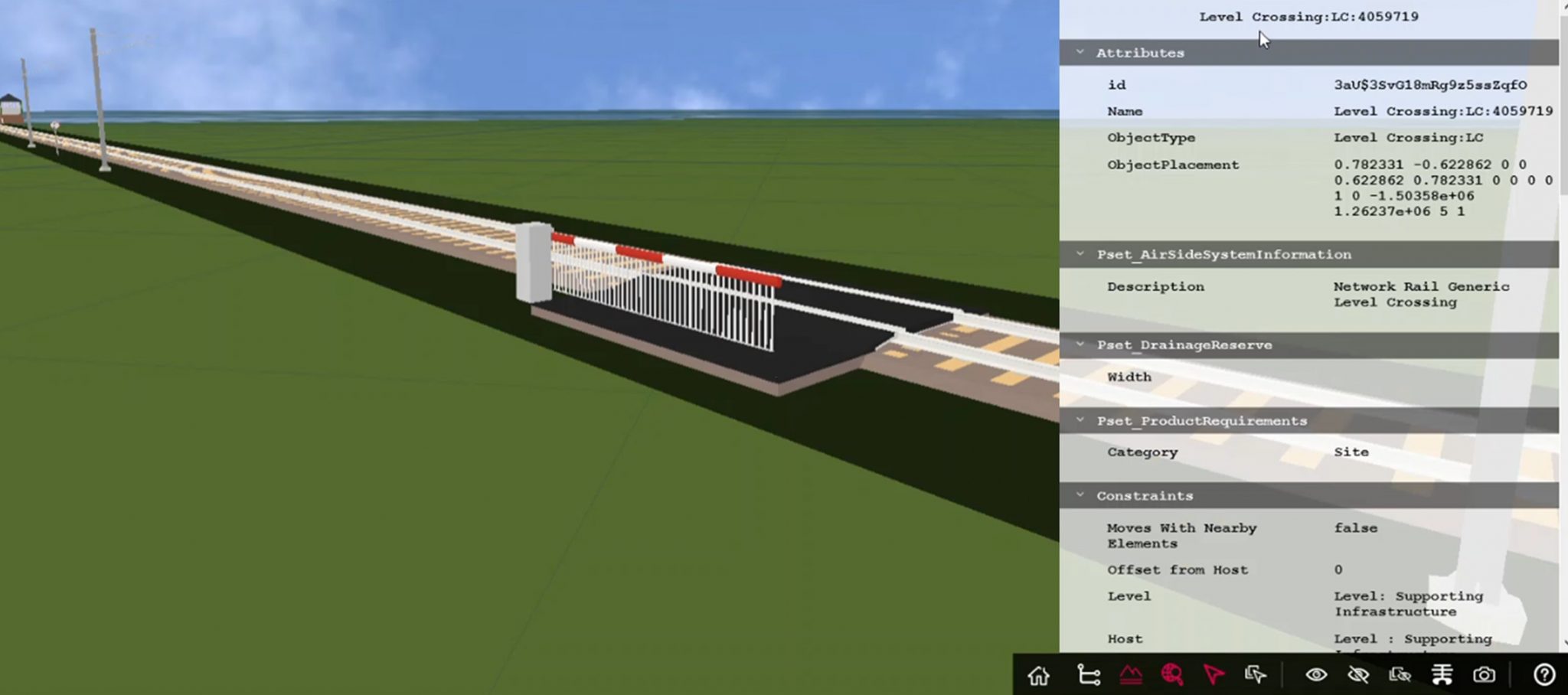BIM for Operations and Maintenance for Network Rail
Project
Published by:
Datasheet
Description
Azurelope, alongside our strategic partners Assystem, were commissioned to develop an Asset and Building Information Model hosted in REBIM®, for a two-mile area of track from Werrington Peterborough to Tallington (East Coast Mainline). This is part of Network Rail’s commitment to understanding new approaches in line with their commitment to continuous improvement.

Creating an Asset and Building Information Model
Using data modelling techniques and a range of existing documentation provided by Network Rail, we were able to create a detailed asset taxonomy which was applied to the asset and building information model.
Referenced documentation used to create this asset and building information model included a variety of information sources such as:
- Schematic diagrams
- Data in asset management and maintenance systems
- Technical design specifications
- Detailed coordinate surveys and laser scans created from track condition assessment trains (New Measurement Train – AKA The Flying Banana)
- Sighting forms
- Computer Aided Design (CAD) drawings
Our Approach
The designed asset and building information model for this track section was developed in line with our expertise in digital consultancy, particularly systems engineering and data modelling.
An automated rules engine was used to create and assign specific data attributes from survey data sources and asset management databases to the assets contained to the 3D geometric model. This provided a number of insights and benefits for using federated data in our BIM for Operations and Maintenance platform, REBIM®.

The Benefits for Network Rail
The developed 3D geometric asset & information model enabled and provided REBIM® users with a range of maintenance & document management functions, as well as options to integrate with PowerBI & SharePoint.
The main benefits during this phase of engagement, were enabling a variety of asset and maintenance stakeholders using REBIM® to:
- Easily find and select an asset in five clicks or less (e.g. specific balise)
- Dovetail into the wider Signalling Innovation Group digital improvements
- Markup (draw, stamp, annotate etc) assets within the REBIM® electronic document management system
- Virtually collaborate and navigate the 3D geometric model
- Raise maintenance events (reactive & planned for selected assets)
- Use the REBIM® chat system to communicate with team members for items that require inspection and attention
- Connect and interface to a range of asset and information systems such as SharePoint and PowerBi
- Identify the specific asset location on the track (longitude, latitude & elevation)
- Review core information about the specific asset (e.g. last inspection and manufacturer)
- Append and attach core documentation such as inspection findings and site survey photographs to assets
- Use a range of mobile devices such as phones and tablets to navigate the 3D geometric asset and building information model
- Markup documents for approval and review, depending on engineering and maintenance requests

Interoperability and System Data Exchange Format
The System Data Exchange Format (SDEF) is a schema and interface mechanism that supports the exchange of data between separate or independent standalone asset, information, and maintenance information systems used by Network Rail and their supply chain.
As well as creating a powerful asset information and BIM model, REBIM® has mapped Network Rail’s System Data Exchange Format (SDEF) to the assets contained within the asset and building information model.
This provided a range of benefits to maintenance and information management stakeholders, as the asset data contained within this 3D geometric model can be ingested and interfaced to an array of existing information and maintenance platforms.
In summary, this process enabled interoperability and the sharing of data between the existing technology landscape and the exciting and powerful set of futureproofed operations and maintenance functions that can be realised using the REBIM® platform. For example, it is possible to select an asset in REBIM®, such as an EP9 – Electrification Support, raise a reactive task in REBIM® for maintenance, and, as well as track and perform maintenance activities in REBIM®, interface this data to existing asset and maintenance management systems.
What’s next?
The continuous evolution of the asset and building information model maintenance functions that have been harnessed during this proof of concept, has provided a range of exciting next steps for the next phase of this development.
Type of Work
- Civil work












